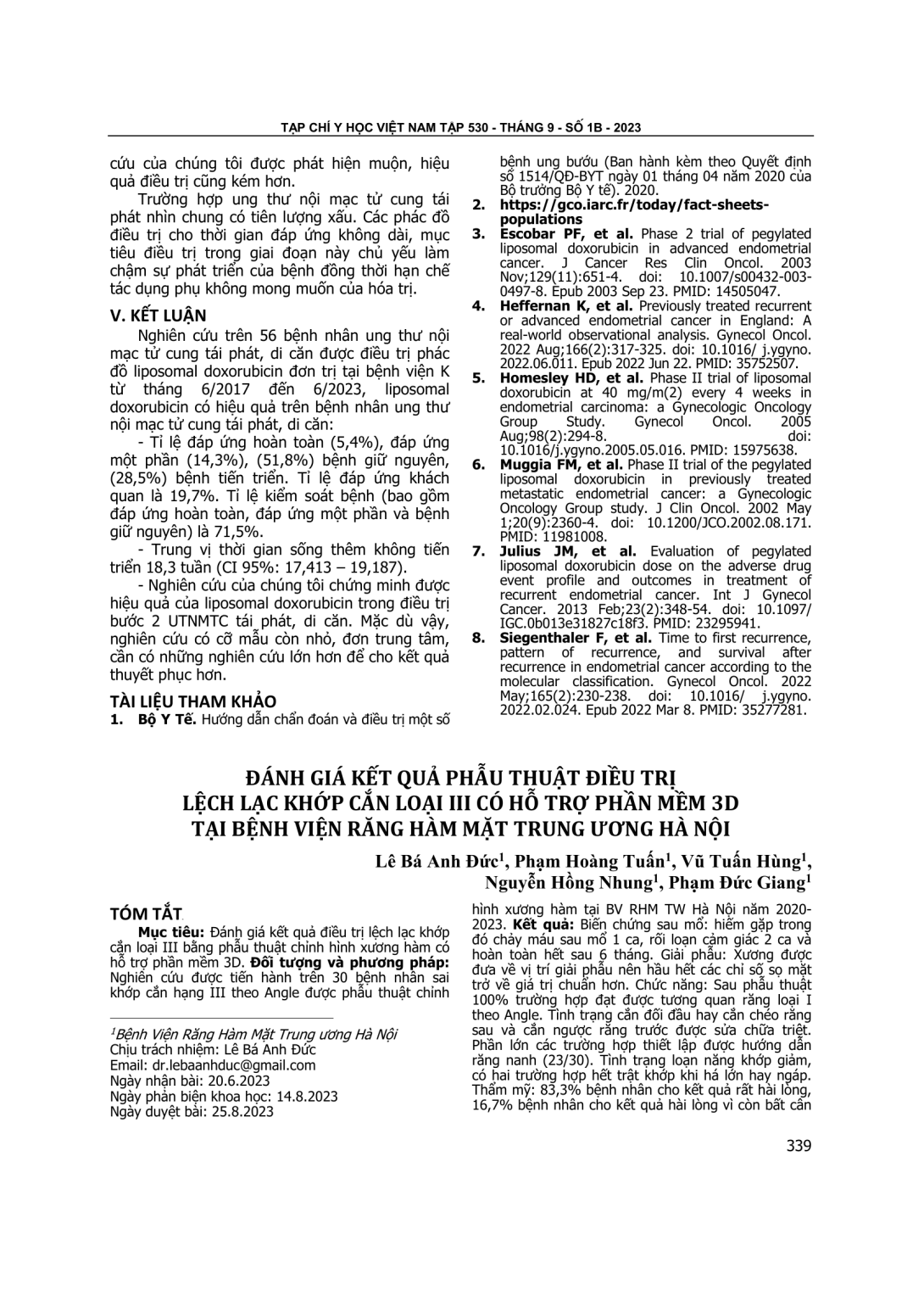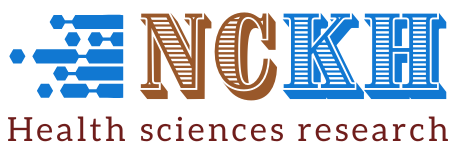
Đánh giá kết quả điều trị lệch lạc khớp cắn loại III bằng phẫu thuật chỉnh hình xương hàm có hỗ trợ phần mềm 3D. Đối tượng và phương pháp: Nghiên cứu được tiến hành trên 30 bệnh nhân sai khớp cắn hạng III theo Angle được phẫu thuật chỉnh hình xương hàm tại BV RHM TW Hà Nội năm 2020-2023. Kết quả: Biến chứng sau mổ: hiếm gặp trong đó chảy máu sau mổ 1 ca, rối loạn cảm giác 2 ca và hoàn toàn hết sau 6 tháng. Giải phẫu: Xương được đưa về vị trí giải phẫu nên hầu hết các chỉ số sọ mặt trở về giá trị chuẩn hơn. Chức năng: Sau phẫu thuật 100% trường hợp đạt được tương quan răng loại I theo Angle. Tình trạng cắn đối đầu hay cắn chéo răng sau và cắn ngược răng trước được sửa chữa triệt. Phần lớn các trường hợp thiết lập được hướng dẫn răng nanh (23/30). Tình trạng loạn năng khớp giảm, có hai trường hợp hết trật khớp khi há lớn hay ngáp. Thẩm mỹ: 83,3% bệnh nhân cho kết quả rất hài lòng, 16,7% bệnh nhân cho kết quả hài lòng vì còn bất cân xứng nhẹ vùng cằm và bờ dưới XHD. Ổn định xương: Tái phát chủ yếu trong 3 tháng đầu tiên sau phẫu thuật. Mức độ tái phát khác nhau ở các vị trí khác nhau, theo các chiều (chiều ngang ít hơn chiều đứng). Kết luận: Phẫu thuật chỉnh hình xương hàm có hỗ trợ phần mềm 3D đem lại kết quả tốt về cả chức năng và thẩm mỹ cho bệnh nhân sai khớp cắn hạng III
This study aimed to evaluate the outcomes of surgical treatment for Class III malocclusion using orthognathic surgery with 3D software support. Subjects and Methods: The study was conducted on 30 patients with Class III malocclusion, as per Angle's classification, who underwent orthognathic surgery at the National Hospital of Odonto-Stomatology Hanoi, Vietnam, between 2020 and 2023. Results: Postoperative complications were rare, with only one case of postoperative bleeding and two cases of sensory disturbance, all resolved entirely within six months. Anatomically, the bones were successfully repositioned, significantly improving most craniofacial indices, approaching standard values. Functionally, after surgery, 100% of the cases achieved Class I dental occlusion, according to Angle. The cases of anterior crossbite, posterior crossbite, and anterior edge-to-edge bite were thoroughly corrected. The majority of cases showed canine-guided occlusion (23 out of 30). Temporomandibular joint dysfunction decreased, and in two cases, the joint dislocation ceased during wide mouth opening or yawning. Aesthetically, 83.3% of patients reported very satisfactory results, while 16.7% expressed satisfaction despite slight asymmetry in the chin and lower border of the mandible. Bone stabilization showed recurrence mainly within the first three months after surgery, with varying recurrence in different locations and dimensions (more in the vertical dimension). Conclusion: 3D software-assisted orthognathic jaw surgery yielded positive outcomes in both functional and aesthetic aspects for patients with Class III malocclusion.
- Đăng nhập để gửi ý kiến
